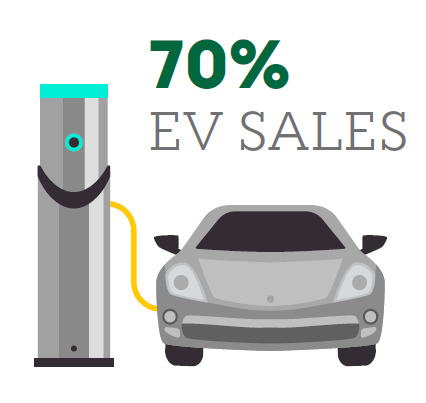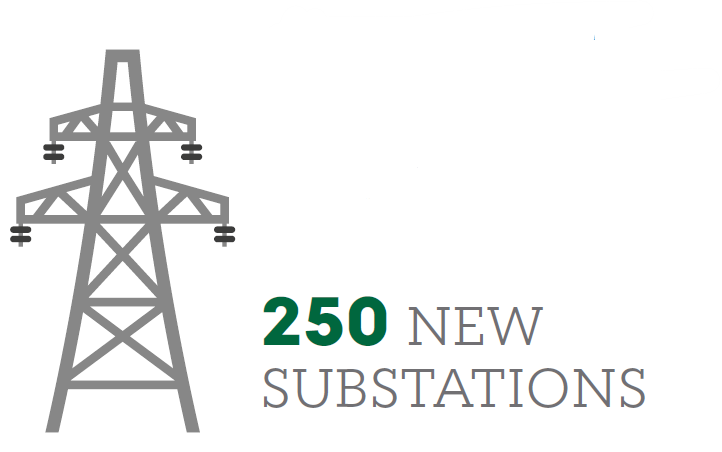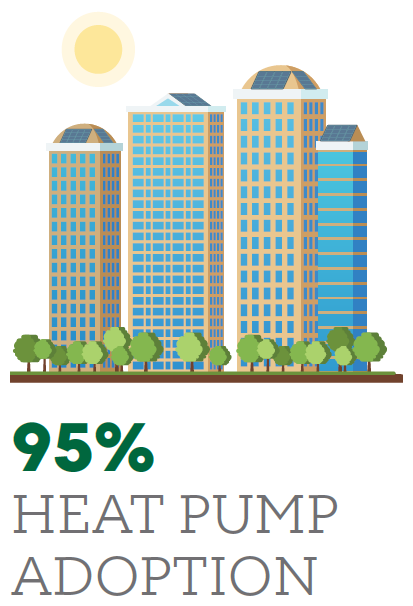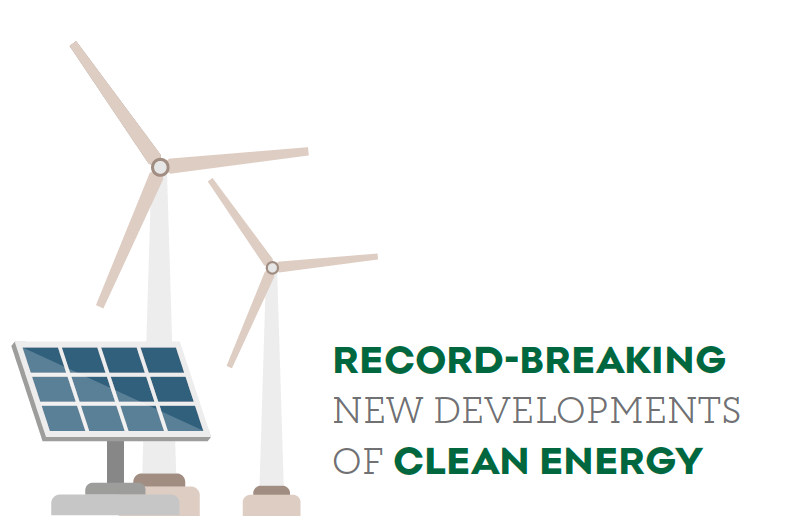Faced with an ambitious new schedule for reducing Maryland’s greenhouse gas (GHG) emissions, leaders across multiple industries are warning that even aggressive implementation plans – which would dramatically decarbonize transportation, buildings and the electric grid – will fail to meet the state’s 2031 GHG goal.
Previously, Maryland was working towards cutting GHG emissions 50 percent by 2030. Between 2006 and 2020, the state reduced carbon emissions by just over 36 million metric tons – 30 percent lower than 2006 levels.
 However, the Climate Solutions Now Act, passed by Maryland’s General Assembly earlier this year, established a new goal of cutting emissions 60 percent from 2006 levels by 2031. Reaching that new target will require the state to dramatically accelerate decarbonization. Specifically, we would have to achieve roughly the same emissions reductions Maryland posted over the last 15 years but accomplish it in just nine years. The state’s historic average of cutting emissions two percent per year would have to jump to 3.8 percent.
However, the Climate Solutions Now Act, passed by Maryland’s General Assembly earlier this year, established a new goal of cutting emissions 60 percent from 2006 levels by 2031. Reaching that new target will require the state to dramatically accelerate decarbonization. Specifically, we would have to achieve roughly the same emissions reductions Maryland posted over the last 15 years but accomplish it in just nine years. The state’s historic average of cutting emissions two percent per year would have to jump to 3.8 percent.
Tasked with finding ways to achieve the 2031 60 percent reduction, industry leaders say the necessary steps will involve profound changes to transportation, building systems, energy developments, state expenditures and the operations of innumerable businesses in the near future. Computer modeling of the most aggressive implementation plans – which include 100 percent clean electricity, retrofitting 50 percent of buildings shells by 2030, blending biofuels into natural gas pipelines and using carbon capture at cement plants – would still fall 13.3 million metric tons per year short of the 2031 target.
 The switch to a 60 percent reduction by 2031 “may not sound like a big deal, but every percentage added is an order of magnitude harder to achieve, particularly when you are talking about maneuvering a whole economy in a different direction in nine years,” said Michael Powell, a member of the state Climate Change Commission and an attorney with the Energy and Environment Practice Group at Gordon Feinblatt. “Achieving that extra 10 percent reduction is going to change every single person’s life and it’s definitely going to affect everyone who is in the business of building or running commercial enterprises.”
The switch to a 60 percent reduction by 2031 “may not sound like a big deal, but every percentage added is an order of magnitude harder to achieve, particularly when you are talking about maneuvering a whole economy in a different direction in nine years,” said Michael Powell, a member of the state Climate Change Commission and an attorney with the Energy and Environment Practice Group at Gordon Feinblatt. “Achieving that extra 10 percent reduction is going to change every single person’s life and it’s definitely going to affect everyone who is in the business of building or running commercial enterprises.”
Transportation is the single largest contributor to GHG emissions in Maryland. Consequently, the Climate Change Commission voted in October to recommend the General Assembly enact several transportation initiatives. They include:
- Establish a target of seeing zero emission vehicles (ZEVs), such as electric vehicles (EVs), constitute 70 percent of all new car sales in Maryland by 2030 and mandate 100 percent ZEV sales by 2035;
- Require the Maryland Department of the Environment to adopt a low-carbon fuel standard which lowers the environmental impact of transportation fuels; and
- Create incentives to support ZEV adoption, including funds to offset the cost of adding EV chargers to multi-family housing and the creation of a green bank to provide government-backed, low-interest loans to EV buyers.
Achieving that level of ZEV adoption would require a massive overhaul of the vehicles on Maryland’s roads. Among the 5.2 million vehicles currently registered in Maryland, just 36,000 – or 0.6 percent – are ZEVs. Another 19,700 are plug-in hybrid vehicles.
In a letter to the Maryland Climate Commission, the Alliance for Automotive Innovation described the incentives that California used to spur residents to purchase 1.15 million EVs and calculated what a similar initiative could cost in Maryland. “Using Maryland’s 2021 new vehicle sales of 280,476, the cost to provide incentives at the California level would approach $500 million.”
Maryland also needs to embark on a massive buildout of its EV charging infrastructure, the alliance wrote. Currently, the state has 2,557 L2 public charging stations and 356 fast charger outlets. The total number of charging stations would need to exceed 282,000 by 2035 – an expansion that would require changes to building codes to mandate EV charging capabilities in residential, commercial and public buildings, the letter stated.
 Decarbonizing the built environment is another high priority of the Climate Change Commission. It plans to vote on several building-electrification proposals later this year, including:
Decarbonizing the built environment is another high priority of the Climate Change Commission. It plans to vote on several building-electrification proposals later this year, including:
- Adopting a target to achieve 95 percent heat pump use in new and existing buildings by 2030;
- Phasing out “non-essential emissions-producing equipment” in building systems by 2030; and
- Establishing incentives to offset the cost of retrofitting buildings with heat pumps.
In an October letter to the commission, BGE called the full-electrification approach to achieving Maryland’s climate goals unaffordable and implausible, noting it would have to build 250 new or expanded substations to meet the growing demand for electricity. In a study for BGE, Energy + Environmental Economics (E3) argued that an integrated energy system would better facilitate the path to Maryland’s GHG goals. That approach would dramatically increase use of electricity but also permit limited fuel use and support the transition to cleaner fuels. The E3 report proposed several initiatives, including:
- Piloting hybrid heat pump operations with backup natural gas service;
- Piloting networked geothermal systems for residential and commercial properties; and
- Supporting the emergence of renewable natural gas supply sources and dedicated hydrogen infrastructure.
Whether to allow selective natural gas use long term is a topic of debate among commission members and policy makers. Carbon reductions from electrification depend on the grid providing clean energy. A large shift to EV and heat pump use will dramatically increase the need for electricity, challenge the grid to cope with new peak-demand periods during winter nights and require massive buildout of new, clean energy sources that can be harnessed at any hour of the year.
 “To date, we have only built seven, utility-scale solar farms in Maryland,” Powell said. “Solar developers, like commercial developers, encounter a lot of NIMBY opposition. We see proposals that take eight to 10 years to go from drawing board to construction in the field due to local opposition. Yet we have to get a 60 percent reduction in GHG in eight years, so we have to build clean energy facilities a lot faster.”
“To date, we have only built seven, utility-scale solar farms in Maryland,” Powell said. “Solar developers, like commercial developers, encounter a lot of NIMBY opposition. We see proposals that take eight to 10 years to go from drawing board to construction in the field due to local opposition. Yet we have to get a 60 percent reduction in GHG in eight years, so we have to build clean energy facilities a lot faster.”
In an attempt to speed that process, the Climate Change Commission voted to ask the General Assembly to require each county to designate sufficient solar sites to support the energy needs of their population.
Decisions made by the commission in October, however, are just the beginning of efforts by state agencies and legislators to achieve the 2031 goal. Commercial real estate professionals, Powell said, should prepare to adjust to new policies, code requirements and tenant needs in the coming years.
“We need to think more about electric vehicle charging as an amenity. It won’t be long before prospective tenants or buyers will be asking about your charging capacity. You have got to stay ahead of that curve,” he said. “Secondly, you have to plan for a conversion to heat pumps in any place where it is possible because building codes are going to force you to justify any alternative. You are going to have to expect significant changes in building codes and development requirements every year. To meet those standards, we are going to have to invent new ways of doing business.”